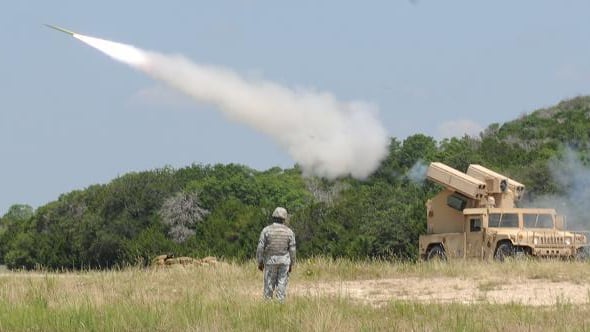Much of the discussion at the 2016 Space and Missile Defense Symposium in Huntsville, Alabama, has focused on unconventional threats within the missile defense sphere. These include countering unmanned aircraft and hypersonic weapons. While these emerging threats pose challenges, Northrop Grumman vice president and general manager of missile defense and protective systems Dan Verwiel notes there's a common pattern among the threats and they can be thwarted in the same manner.
Verwiel likened missile warfare to the human body. With the human body as the platform, the eyes, mouth and nose are the sensors picking up signals within its environment, he told C4ISRNET in an Aug.17 interview at SMD. Effectors, which are designed perform some type of action based on what is picked by the sensors, are extremities such as hands, arms and legs. The brain is the command and control (C2) node, processing information the sensors collect and directing what actions to take.
"So do I use my left leg, my right leg, my hand, my arm?" he said.
The information that travels from the C2 node, or the brain, to the extremities, or the effectors, is the nervous system, which in a weapons system context is the communications path or tactical internet.
"When you look at a program like [the Integrated Air and Missile Defense Battle Command System, or IBCS], the purpose of IBCS is to figure out which sensor gives me the best piece of information," Verwiel said. "And it might be all the sensors at the same time really process all that information to identify exactly what that threat is – conventional or unconventional – and then assign an order to one of the effectors to deal with that threat."
Verwiel said he considers what Northrop does as being the brain.
"We don't make effectors necessarily, we don't make sensors – at least my organization doesn't – we look at making the command and control infrastructure," he explained.
Regardless of the threat or projectile systems troops are trying to defend against, they can all be dealt with the same.
"So I will put sensors in the field that will identify an [electronic warfare] threat and I will pick the best effector…do I deal with that with a directed energy, do I deal with that with EW, do I deal with it by shooting it down? Maybe I want to follow it or see where it came from," he said. "If my sensors identify that as an enemy [unmanned aerial system], do I want to shoot it down, do I want to take control of it, do I want to follow it to see where it came from, do I want to do something else?" he said.
The C2 node is critical in these systems as the next generation is moving toward gaining access to as much information as possible, processing the information to identify what the treat is, tying other systems or C2 nodes together and then identifying which of the effectors is the best way to deal with it, Verwiel said.
Protecting these systems from vulnerabilities is critical as cyber threats proliferate. Once information begins to travel through the communication path, or in the body analogy through the nervous system, "how do I protect it, well that could be my antiviral system," Verwiel explained.
He added that a great deal of time is spent conducting war games and figuring out what the potential threat environment might be in order to design around them.
"We constantly cycle that through test, retest, test, retest and before it gets fielded, design in all of those potential cyber threats as well as all of the threats before we actually get to the point where we field the system," he said.
Mark Pomerleau is a reporter for C4ISRNET, covering information warfare and cyberspace.






